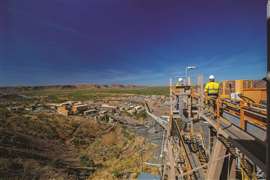Renovations drive construction growth in Europe…but is the pace fast enough?
18 July 2023
 Image: ME Image via AdobeStock - stock.adobe.com
Image: ME Image via AdobeStock - stock.adobe.com
Renovation of existing buildings is key in the battle against global warming and new research has predicted that the repair and maintenance sector is set to grow as a result.
But is that growth going to be rapid enough to help the European Union (EU) attain its climate goals?
The EU has set a goal of achieving climate neutrality by 2050. With buildings contributing to 40% of all energy consumption and 36% of greenhouse gases in the European Union, they are receiving particular attention when it comes to efforts to arrest climate change.
However, a report from the European Climate Neutrality Observatory (ECNO) has warned that progress in the built environment – one of 13 ‘building blocks’ that have the potential to make up a climate neutral society – is “far too slow”.
The ECNO’s report warned that the annual reduction of greenhouse gas emissions in buildings needed to be 7.5 times faster than it currently is up until 2030 to meet targets set by the EU’s Renovation Wave.
The ‘Renovation Wave’, a strategy published by the European Commission in 2020, aims to double energy renovation rates over the next 10 years and focuses on three core areas:
- Tackling energy poverty and the worst-performing buildings
- Public buildings and social infrastructure
- Decarbonising heating and cooling
Part of the reason for the slow progress, the ECNO said, was to do with that third area of focus: the switch from fossil fuels to renewable or electric heating within buildings has been sluggish.
But it found that the pace of renovation in general was too slow.
R&M growing but requires further regulatory push
Nonetheless, research by Dutch bank ING said it expected sustainability regulations and high energy prices to continue to drive growth in the EU renovation sector, which now accounts for more than half of construction work.
It said that the unglamourous R&M market is enjoying a “tailwind” after high energy prices sparked a run on all kinds of energy-saving measures for buildings.
It pointed out that a large building materials suppliers are dependent on the R&M market, which tends to be fragmented and generally involves smaller companies.
The sale and installation of insulation, insulating glass, heat pumps and solar panels have all seen increases in sales.
In total, ING found that R&M’s share of the overall construction market has grown from 48% in 2008 to more than 54% in 2022.
Unsurprisingly, renovation is largest in the residential sector.
Some countries have started to try and speed up their renovation efforts. Last week came news that France would spend €7 billion on the green transition in 2024, with a focus on refurbishing public office buildings, even as the country’s government tries to reduce spending overall in its latest budget.
Incoming regulations
If the speed of progress isn’t fast enough, European regulators hope to change that with new rules and regulations aimed at accelerating progress.
Both the ECNO and ING reports anticipated that amendments to the 2010 Energy Performance for Buildings Directive, passed in March this year, would drive structural growth.
One key change to come within the amendments is replacing the existing energy performance certification system with a more comprehensive ‘passport’ assessment of a building’s environmental performance.
It establishes minimum energy performance requirements that all buildings must meet within a specified time period.
Meanwhile, a new certification system evaluates the environmental performance of a building during its entire lifecycle, including the emissions generated during the production of construction and insulation materials. It also takes into account how efficient the construction process itself is, and how the building performs once in operation.
Under the amendments, all new buildings will also have to produce zero emissions by 2028.
And the ECNO’s report points to other regulatory changes that could help drive growth for the R&M sector, including changes to the EU’s Emissions Trading Scheme (ETS), which will extend emissions trading to the buildings sector.
Commenting on the state of the renovation sector, ING senior economist in construction, Maurice van Sante, said, “Despite the temporary circumstances caused by the Covid-19 pandemic and the energy crisis, the trajectory for residential energy efficiency upgrades remains promising.
“Looking ahead, we expect gradual growth in the renovation market due to sustained government regulations and the structural impact of higher energy prices.
Besix promises circular approach to materials in major Brussels office renovation
 Aerial view of central Brussels, Belgium (Image: LALSSTOCK via AdobeStock - stock.adobe.com)
Aerial view of central Brussels, Belgium (Image: LALSSTOCK via AdobeStock - stock.adobe.com)
Major Belgian-French construction group Besix has signed a deal to renovate a 60,000 sq m office building called ‘the Hive’ in Brussels, Belgium.
Besix said it would fully renovate the building, taking a comprehensive approach to the circularity of materials and an ‘early contractor involvement’ approach.
Bank BNP Paribas Fortis owns the 13-storey building.
Work involves stripping it of asbestos, before reconfiguring it to let in more daylight, refurbishing the technical installations, and renewing the building to reduce its environmental footprint significantly.
Besix worked with BNP Paribas Fortis and project designers Jaspers-Eyers Architects at the tender stage in an early contractor involvement setup to co-ordinate the design and construction stages to make better technical and economic choices.
Besix has already renovated other buildings for the same client, including reconstructing the new BNP Paribas Fortis headquarters building (Montagne du Parc), also in Brussels, in 2021. Designed as a passive building, it covers a total of 100,000 sq m.
The contractor also renovated the 15,600 sq m Chancellerie project for BNP Paribas Fortis in 2014.
Professional services company Turner & Townsend last month named the office fit-out sector as the fifth top-performing sector in construction in 2023, driven by sustainability demands and a lower appetite for new buildings.
STAY CONNECTED


Receive the information you need when you need it through our world-leading magazines, newsletters and daily briefings.
CONNECT WITH THE TEAM











